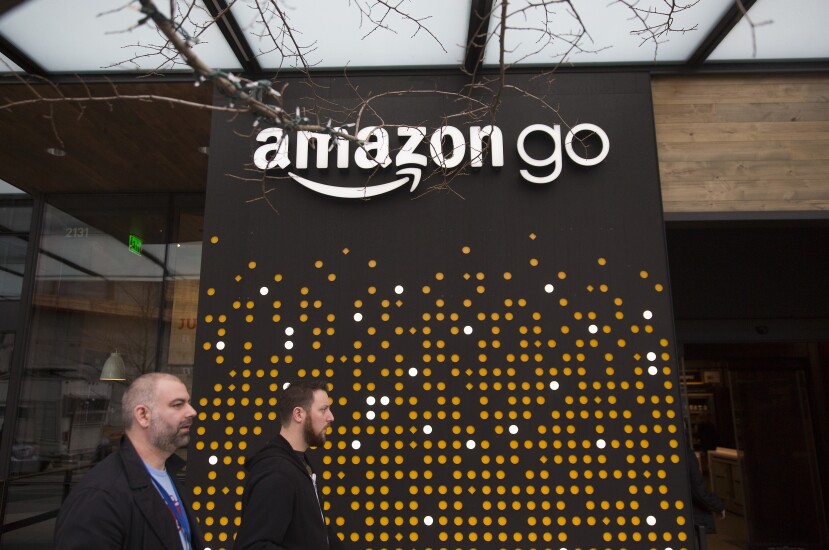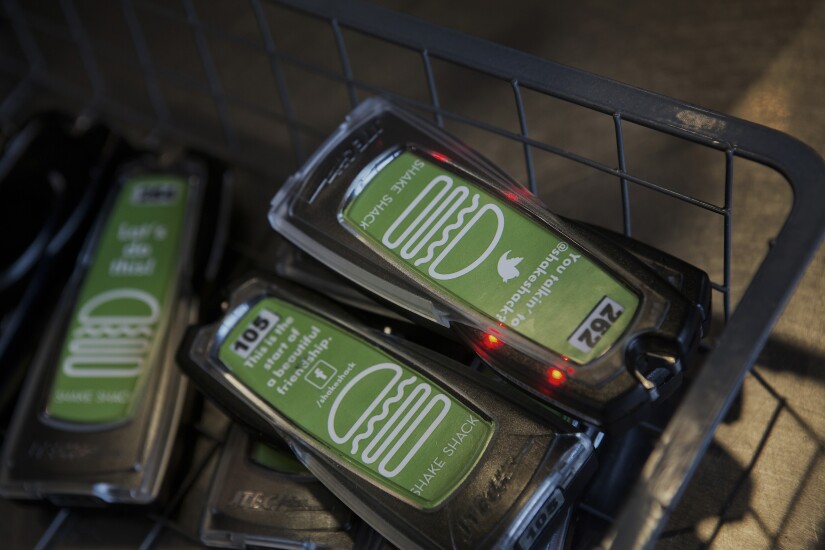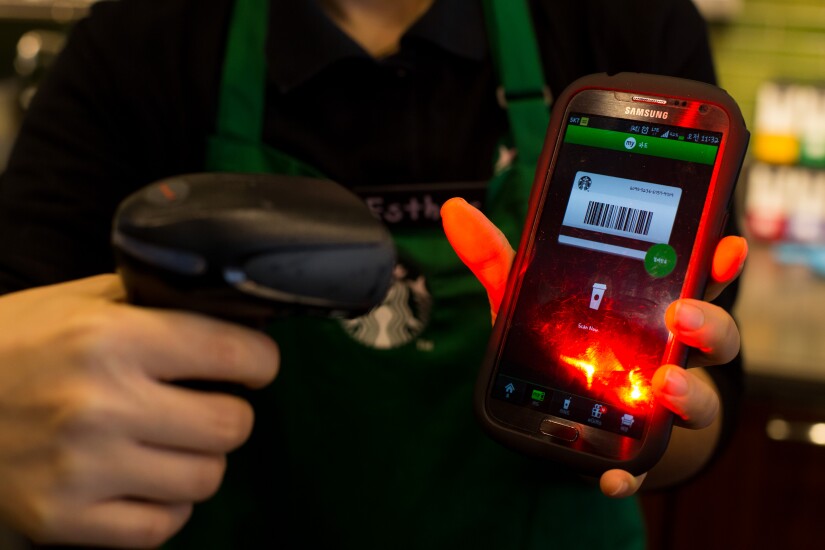
Even today, as mobile and e-commerce payment options flood the market, few companies are willing to do away with cash acceptance. But a handful of brands have launched cashless locations, taking a bold step into a future where cash is no longer king.
This listicle is compiled from reporting by PaymentsSource writers including John Adams, Kate Fitzgerald and Nick Holland. Click the links in each item to read more.

Sweetgreen and the credit card diet
Not all diets last, but this one did. In 2017, Sweetgreen, which operates 64 fast-casual salad eateries,
“Getting rid of cash improved efficiency, cut operating costs around transporting cash to the bank and we promoted it as environmentally friendly," said Theresa Dold, who was Sweetgreen’s director of product until she joined mobile payments firm LevelUp in mid-2017 as vice president of agency strategy.
At the time

Amazon Go — a cashless concept ahead of its time
After a year of teething trouble at the Amazon Go cashierless concept store in Seattle, the e-tailer finally opened its doors to the public in January. While a fascinating exercise in the potential for technology to streamline choke points in a store, no amount of Jetsons-esque technology can prepare the company for a stampede of consumers accustomed to Flintstones-era retail.
Desipte its ambition, the Amazon Go store has not had an
The reason for the complex array of sensors in the Amazon Go store relates to a number of factors — customer analytics, inventory management and real-time diagnostics — but there is also one critical reason for the technology: trust.
In a study conducted by the
A key difference with Amazon Go is every shopper is known from the moment they enter the store. Amazon has glass-gate turnstiles set up at the entrance, prompting shoppers to check in by scanning an app, much like subway riders might scan an app or a fare card before entering the system.
In Amazon's utopian shopping model, nobody is a stranger. This doesn't wipe out the possibility of shoplifting — any more than security cameras or guards wipe out shoplifting at other stores — but it does change the dynamic in a meaningful way.

How Disney built its cashless kingdom
The lodge is separate from the Animal Kingdom theme park. But as with many Disney hotels, Animal Kingdom Lodge guests have free bus access to the theme parks, meaning they never have to leave the Disney ecosystem for the duration of their stay.
Thus, it's clear that while cash is still accepted at the rest of Disney's properties, the company will be watching closely to see whether Animal Kingdom Lodge guests build habits that follow them throughout their vacation.
"Cash represents a larger problem for amusement parks than for many other merchant types," said Rick Oglesby, founder and president of AZ Payments Group. "The nature of the amusement park, having huge crowds, wild rides and many opportunities to get soaking wet, makes it undesirable to carry valuables of any type, including cash."
A cashless property is not as radical a departure as it would be for a restaurant or a shopping mall. Disney has long designed its theme parks to exist as worlds unto themselves, issuing its own "currency" to use as money or as a souvenir.
All of this goes back to Walt Disney's original vision of

Shake Shack updates its 'buzzers,' killing cash in the process
The typical Shake Shack ordering process involves standing in one of two lines to order (one for food and drink, and a faster line for only drinks), paying a cashier, then waiting again for the pager to buzz when the order is ready. The system results in such long lines that Shake Shack provides a "
Almost all of this process is removed in the company's new model, which relies on kiosks or a mobile device and — crucially — collects the customer's phone number as part of the ordering process so that it can send a text alert when the food is ready.
"Beyond eliminating cash it's about eliminating the point of sale. That's a game changer," said Richard Crone, a payments consultant and researcher.
It's clear that this purely digital system opens new possibilities that might have been just out of reach in a system that still allows cash.
Shake Shack already has an order-ahead app, which should of course be compatible with the new location. The app lets users select a location and pickup time, and remembers customers by either creating a Shake Shack account or asking them to link a Facebook or Google account. In this model, the app handles the payment and also doubles as the buzzer — but one look at the Shack Cam is enough to show that many customers still pay the old fashioned way.

Mobile pioneer Starbucks takes cash off the menu
While many stores are eager to push consumers to digital payments, it's rare to ban cash outright. If there is a retailer that could successfully pull off a cashless store, it would be Starbucks, which serves a mobile-friendly demographic from a Seattle headquarters that aids its tech-savvy brand.
More than a quarter of the chain's transactions come through its
Starbucks told
It's also unclear what Starbucks expects to learn from the test at a high-profile venue, suggesting the move is more of a publicity stunt. The downtown Seattle location serves a mostly upscale clientele that probably doesn’t use much cash already, so there is little risk of a consumer outcry.
This also affects how transferrable the concept is to other businesses. Starbucks' mobile app has given it a huge amount of customer data that informs marketing campaigns and personalized offers, but the app's success is built on top of on an already popular gift card program. Any other company wouldn't see the same results by copying the mobile strategy alone.

Beating Amazon at its own game
One is
Standard Cognition's service is backed by machine vision and artificial intelligence, which act as a computerized "staff" that monitors what people pick up from shelves. A 30,000 square foot supermarket would require between 150 and 200 cameras in the ceiling that would take images of shoppers as they walk through the store and take items. These cameras use AI to communicate with each other and an optional mobile app to handle the sale.
Another example is

Where cash isn't just king — it's the law
The law was a focus of a 2016
The law was little-known, according to the Globe, but it may not be as sweeping as it looks. The article examines whether companies such as parking garages might be exempt from the traditional definition of a "retail establishment," the wording used in the text of the law.





